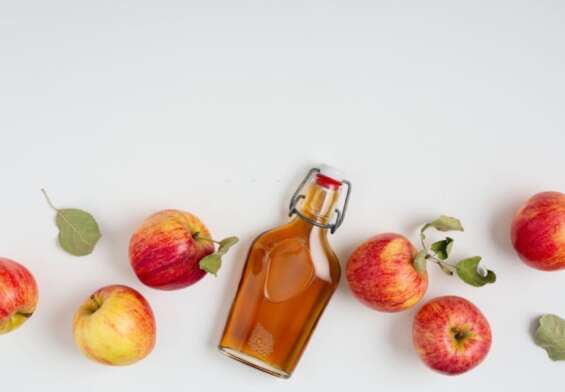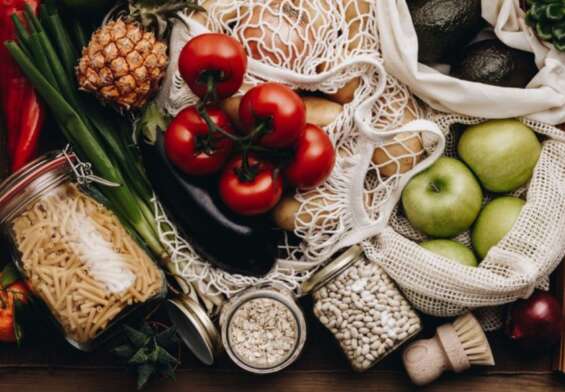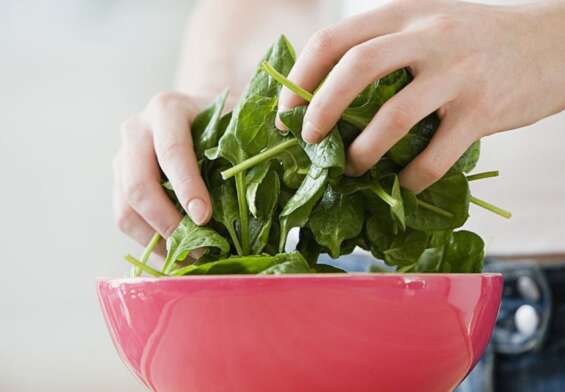
The Mucusless Diet: Clearing Your Body of Toxins
The Mucusless Diet Healing System is a dietary system developed by Arnold Ehret, a German health educator and natural hygienist. It is based on the belief that the body should be free of mucus and toxic waste in order to be healthy. This dietary system focuses on the consumption of fruits, vegetables, nuts, and seeds, while avoiding the consumption of mucus-forming foods such as dairy, meat, and grains. Ehret believed that by following this dietary system, one could achieve optimal health and well-being. The system has been promoted by a number of health professionals as an effective way to improve overall health and prevent disease.
Exploring the Benefits of Following a Mucusless Diet
Are you sick and tired of being sick and tired? If so, it might be time to try out the mucusless diet! This unique diet has been gaining traction in recent years, and for good reason. It’s all about replacing mucus-forming foods with mucusless foods, which can help reduce inflammation and improve overall health.
So what kind of magical, mucusless foods are we talking about? Well, the diet mostly consists of fruits, vegetables, and grains, with a few exceptions. It excludes processed foods, dairy, eggs, and red meat, but does allow for some occasional treats like honey or maple syrup.
It’s not just about what you can’t eat though. It’s about what you can eat! Fruits and vegetables are packed with nutrition and provide your body with the energy it needs to get through the day. And since the diet is low in fat, it can help you lose weight and keep it off.
But that’s not all. Following a mucusless diet can also help reduce your risk of chronic diseases like arthritis, heart disease, and diabetes. It can even help lower your cholesterol and reduce inflammation in the body.
So why not give the mucusless diet a try? It may seem like a lot of work at first, but the benefits are worth it. And if you’re feeling extra adventurous, you can always try some mucusless recipes to spice things up a bit. Who knows, you may find yourself having more energy and feeling better than ever before!
How to Transition to a Mucusless Diet
Are you ready to transition to a mucusless diet? If so, you’re in luck! We’ve got all the tips and tricks you need to make the transition as smooth as possible.
Start small. Don’t try to go all in right away. Start by cutting out the most obvious mucus-causing foods like dairy, processed foods, and sugar. You can gradually add in more and more mucusless foods as you go.
Don’t forget the spices! Spices like turmeric, cayenne, and ginger can help add flavor and variety to your meals. Plus, they have anti-inflammatory properties that can help reduce mucus build-up.
Get creative. A mucusless diet can be surprisingly delicious and satisfying. Try experimenting with different recipes, or even make your own.
Take it easy on yourself. Don’t beat yourself up if you slip up or don’t stick to the diet perfectly. Transitioning to a mucusless diet takes time and practice, so don’t be too hard on yourself.
Have fun with it! Transitioning to a mucusless diet doesn’t have to be a chore. Find joy in the process and celebrate each small victory. Before you know it, you’ll be a mucusless diet pro!
What to Eat on a Mucusless Diet
If you’re on a mucusless diet, you might be wondering what you’re allowed to eat. Well, if you’re feeling adventurous, you can try some of these mucusless diet recipes!
- Sweet Potato Soup: Start by sautéing some onions and garlic in some olive oil. Once they are softened, add in some diced sweet potatoes, some vegetable broth, and some herbs and spices. Simmer until the potatoes are soft and then blend until smooth. Top with some freshly chopped parsley and enjoy!
- Veggie Noodle Bowl: Start by cooking some noodles of your choice according to package instructions. In a separate pan, sauté some onion, garlic, mushrooms, and bell peppers in some olive oil. Once the vegetables are softened, add in some cooked noodles, some fresh herbs, and some vegan cheese (optional). Enjoy as is or top with some diced avocado.
- Zucchini Fritters: Grate some zucchini and squeeze out the excess liquid. In a bowl, mix together the zucchini, some eggs, some diced onion, some chopped herbs, some almond flour, and some salt and pepper. Heat some oil in a pan and drop small spoonfuls of the batter into the pan. Fry until golden brown and enjoy with a dollop of vegan sour cream!
- Kale & Quinoa Salad: Start by cooking some quinoa according to package instructions. In a separate pan, sauté some onions and garlic in some olive oil. Once softened, add in some cooked quinoa and some diced kale. Stir and cook until the kale is wilted. Season with some herbs and spices and top with some freshly squeezed lemon juice. Serve at room temperature or chilled.
So, there you have it! With a little creativity, you can make some delicious meals that are mucusless diet-friendly. Bon appétit!
Understanding the Scientific Evidence Behind the Mucusless Diet
Are you looking for a way to lose weight, be healthier, and revolutionize your diet all at the same time? Well then, the mucusless diet may be the perfect solution for you!
The mucusless diet is based on the idea that a diet high in mucus-forming foods causes blockages in the body, which lead to disease. By avoiding these mucus-forming foods, you can keep your body free of clogged passages and improve your overall health.
So, what exactly are these mucus-forming foods? They include things like red meat, dairy products, eggs, refined carbohydrates, processed foods, fried foods, and sugar. The goal of the mucusless diet is to eliminate these foods from your diet and replace them with foods that don’t create mucus.
The most recommended mucusless diet foods are fruits, vegetables, whole grains, legumes, and nuts. These foods are high in fiber, vitamins, minerals, and antioxidants, which can help keep your body running smoothly.
The scientific evidence behind the mucusless diet is still being explored, but some studies have suggested that it may help reduce inflammation and improve digestion. It may also help with weight loss, as it encourages you to eat more nutrient-dense, plant-based foods and fewer processed foods.
So, if you’re looking for a way to revolutionize your diet and improve your health, the mucusless diet may be worth a try! With its focus on eliminating mucus-forming foods and replacing them with nutrient-dense, plant-based foods, it could be just the thing you need to start your journey to better health.
Just remember – while the mucusless diet may be a great way to improve your health, it’s important to talk to your doctor before making any drastic changes to your diet. After all, they know your body best! Who knows – maybe the mucusless diet could be the key to a healthier, happier you!
The Impact of Exercising on a Mucusless Diet
Are you looking to get fit, but don’t want to give up your favorite treats? Well, you can have your cake and eat it, too! With a mucusless diet and regular exercise, you can keep your body healthy and feel great.
A mucusless diet is one that eliminates all mucous-forming foods from your diet, such as dairy, meat, eggs, and processed foods. Instead, you’ll focus on consuming fruits, vegetables, nuts, grains, and legumes. This type of diet provides your body with the nutrients it needs to feel its best.
But a mucusless diet isn’t enough to optimize your health. You must also exercise regularly. Exercise helps to increase your energy level and strength, while also promoting weight loss. Plus, it’s a great way to reduce stress and even improve your mental well-being.
But what happens when you combine a mucusless diet with regular exercise? The results are astounding! Studies have shown that people who follow a mucusless diet and exercise regularly have significantly lower levels of inflammation, improved heart health, and better overall mental health. So, if you’re looking for a way to improve your health, you can’t go wrong with a mucusless diet and regular exercise.
But be warned: it won’t be easy. This type of lifestyle requires dedication and commitment. But don’t let that discourage you – it’s totally worth it! With a mucusless diet and regular exercise, you’ll be feeling better than ever in no time. So, don’t wait any longer – start your journey to a healthier you today!
How to Stick to a Mucusless Diet in Everyday Life
Are you looking to make a big change in your life by sticking to a mucusless diet? Don’t worry, it’s not as intimidating as it sounds! With a little bit of knowledge and a few helpful tips, you can make this lifestyle adjustment with ease.
First, what is a mucusless diet? It’s an eating plan that focuses on consuming foods that are free of mucus. Foods such as fruits and vegetables, as well as grains, nuts, and legumes are all naturally mucusless and can be included in the diet. Processed and sugary foods should be avoided, as they can increase mucus production.
Now, here’s how you can make this diet work for you in everyday life:
Start your day off right – Start your mornings with a mucusless breakfast. Fresh fruits, oatmeal, and nuts are all great options. Other great choices include homemade smoothies, chia seed pudding, and avocado toast.
Pack your lunch – Packing a healthy lunch full of mucusless items is a great way to stay on track throughout the day. Salads, veggie wraps, and soups are all excellent options.
Keep snacks on hand – It’s important to have healthy snacks available so you don’t reach for processed, sugary items when you get hungry. Fruits, nuts, and energy balls are all tasty, mucusless snacks that will keep your energy levels up.
Eat out with ease – Eating out can be a challenge when you’re on a mucusless diet, but it’s not impossible. Many restaurants offer vegetable-based dishes that are mucusless. You can also ask your server to modify a dish to make it mucusless.
By following these tips and staying committed to your mucusless diet, you can make this lifestyle change easier than you ever imagined. Good luck!
Recipes for a Mucusless Diet
The Oatmeal of the Gods: Start your day off right with a bowl of mucusless oatmeal! Cook up some oats, stir in some honey, and top it off with a sprinkle of cinnamon for a delicious and nutritious breakfast that won’t leave you feeling all stuffed up.
Mucusless Salad Supreme: Craving something light and refreshing? Try this mucusless salad! Start with a bed of your favorite greens and top it off with a mix of fresh vegetables, some nuts, and a simple vinaigrette. The perfect way to stay healthy and get your daily dose of greens.
Mucusless Soups: Soup is one of the best ways to get a mucusless meal. Try this veggie-packed soup that’s easy to make and sure to please. Start by sautéing onions and garlic in olive oil. Then add in your favorite vegetables, some broth, and a few seasonings. Simmer until the vegetables are tender and you have a delicious soup that’s sure to make you feel better.
Mucusless Stir-fry: This quick and easy meal is sure to hit the spot. Start by stir-frying some lean protein and vegetables in a bit of oil. Add some soy sauce for flavor, and you have a delicious and nutritious meal in no time.
Mucusless Fruit Smoothie: Start your day with a blast of fruit and veggie goodness! Blend your favorite fruits and vegetables with some liquid and you have a nutritious and delicious smoothie that’s sure to make you feel great.
Shopping for a Mucusless Diet on a Budget
Are you looking to get your mucusless diet on a budget? Well, you’ve come to the right place! Here’s a few tips to help you save some cash while still getting the nutrition you need.
First off, head to your local farmers’ market. You’ll find a lot of fresh produce that is much cheaper than in the supermarket. You can get organic fruits and vegetables for a fraction of the price you’d pay in a store. Plus, you’ll be supporting local farmers and businesses.
You can also save some money by going to the bulk section of your local grocery store. Bulk items are usually cheaper than their pre-packaged counterparts. Plus, you can buy just the amount you need, which helps reduce food waste.
Another great way to save money on your mucusless diet is to shop online. There are lots of websites that offer discounts on organic and natural foods. You can easily find deals on items like nuts, seeds, and grains. Plus, you can get them delivered right to your door, so you don’t have to worry about making multiple trips to the store.
Finally, don’t forget about coupons! Many stores offer discounts on health foods, so be sure to keep an eye out for them. You can also find coupons in magazines and newspapers.
So there you have it – a few tips on how to save money on your mucusless diet. With these tips, you can stick to your budget while still getting all the nutrition you need. Happy shopping!
Tips for Incorporating a Mucusless Diet into Your Lifestyle
Start slow: Going cold turkey on your current diet might be too much to take on all at once, so take it one step at a time. Try to avoid processed and fried foods, and begin by adding more steamed and raw vegetables to your meals.
Get creative with your cooking: A mucusless diet doesn’t have to be boring. Spice up your meals with herbs and spices, and try out new recipes to keep things interesting.
Stock up on fruits and vegetables: Make sure your fridge and pantry are stocked with plenty of fresh fruits and vegetables. This will make it easier to whip up a healthy meal when you don’t have time to cook.
Take it one meal at a time: Instead of trying to overhaul your entire diet, focus on one meal at a time. This way, you won’t feel overwhelmed and you’re more likely to stick with your new eating habits.
Find a friend: Eating a mucusless diet can be lonely, so try to find a friend or family member who’s also trying to make the switch. You can encourage each other and swap recipes and ideas.
Stay hydrated: Drink plenty of water throughout the day to help flush out toxins and keep your body hydrated.
Don’t be too hard on yourself: Everyone makes mistakes, so don’t beat yourself up if you slip up and indulge in a treat every now and then. Just make sure you get back on track the next day.
Examining the Pros and Cons of a Mucusless Diet
Have you ever heard of the Mucusless Diet? It’s a dietary regimen that promises to help you feel energized and healthy. But is it really worth the effort? Let’s take a closer look at the pros and cons of this diet.
Pros
- You’ll get more fiber in your diet. This can help reduce your risk of certain diseases, including heart disease and type 2 diabetes.
- You’ll be eating more plant-based foods, which are usually healthier choices than processed, animal-based options.
- You’ll be cutting out foods that can cause inflammation in your body, such as dairy and gluten.
Cons
- It’s a very restrictive diet, and it can be difficult to stick to for any length of time.
- It can be hard to get all the nutrients you need, since the diet eliminates some important food groups.
- You may miss out on some of your favorite foods that are excluded from the diet.
So, should you try the Mucusless Diet? It’s up to you! If you’re looking for a way to improve your health and feel energized, it may be worth a try. Just remember to consult with a doctor or nutritionist first to make sure it’s safe for you. And don’t forget to have a little fun with it, too—after all, life’s too short to be a strict health nut!
Debunking the Myths Surrounding the Mucusless Diet
Are you thinking of trying the mucusless diet? Don’t worry, you don’t have to start slurping up slimy strands of mucus! Despite its name, the mucusless diet isn’t about consuming mucus. In fact, it’s quite the opposite. In this article, we’ll debunk the myths surrounding the mucusless diet and shed some light on what it’s really about.
Myth #1: The mucusless diet is about eating mucus
False! The mucusless diet isn’t about eating mucus—it’s about avoiding it. The mucusless diet is actually a plant-based diet that excludes all animal products, dairy, processed and refined foods, and mucus-forming foods like wheat, white flour, and dairy.
Myth #2: The mucusless diet is hard to stick to
Not true! The mucusless diet is actually quite easy to follow. It’s mostly plant-based, so you can fill up on fruits, vegetables, legumes, nuts, and seeds. You can also include some whole grains and healthy fats like avocados and olive oil. No dietary restrictions here!
Myth #3: The mucusless diet is boring
Definitely not! Eating a mucusless diet doesn’t mean you’re stuck eating the same foods day after day. You can get creative with it and enjoy a wide variety of flavors. Try adding herbs and spices to your meals for an extra flavor boost. You can even make delicious plant-based meals like lentil tacos or veggie stir-fries.
Myth #4: The mucusless diet is unhealthy
Nope! In fact, the opposite is true. Eating a mucusless diet can help reduce inflammation and support your overall health. It’s also rich in antioxidants, vitamins, and minerals that can help protect against chronic diseases like cancer and heart disease.
So there you have it—the truth about the mucusless diet. As you can see, it’s not about eating mucus and it’s not boring or hard to stick to. In fact, it can be a delicious and nutritious way to eat!
Conclusion
The Mucusless Diet is a great option for those looking to improve their health and well-being. It can help reduce inflammation and other issues associated with a poor diet. It may also reduce the risk of chronic diseases. While it may be challenging to follow the diet, it is possible to make lifestyle changes that can help you adhere to the diet. Additionally, it is important to remember that everyone is different and what works for one person may not work for another. Therefore, it is important to talk to a doctor or nutritionist before starting any diet to ensure it is right for you.











